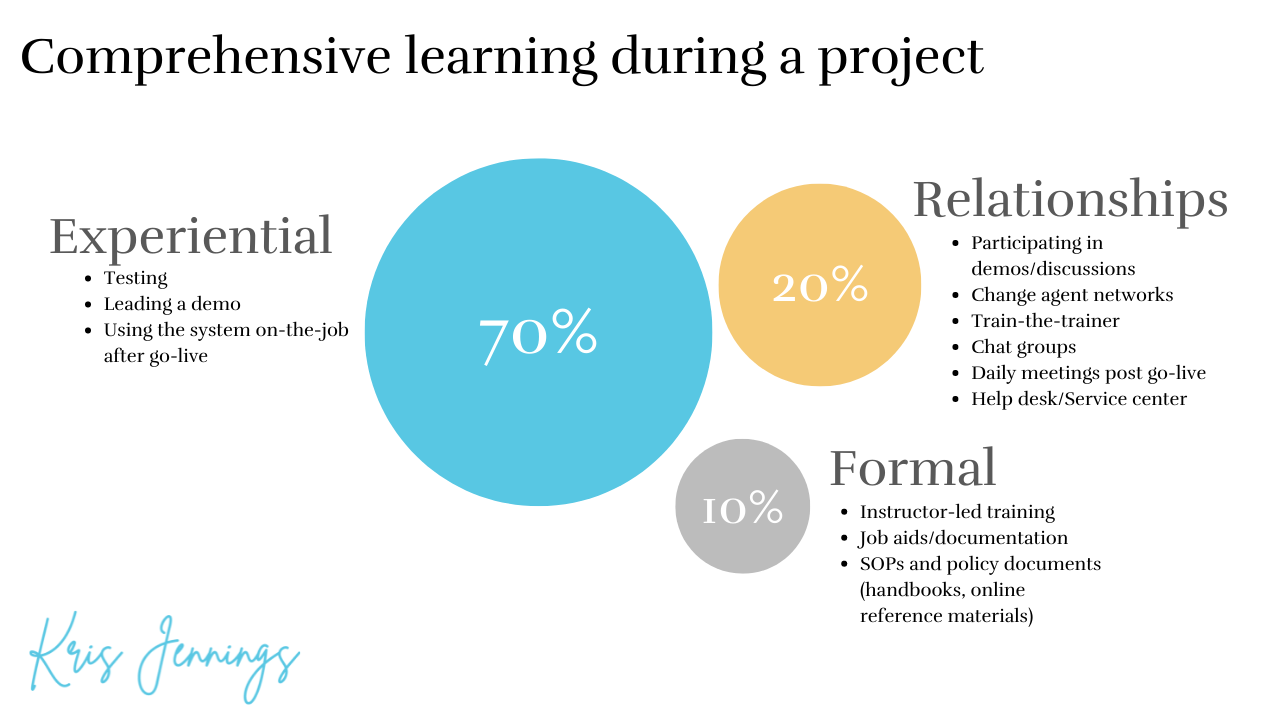
Your project training is hitting only 10% of learner needs
Dec 08, 2022If putting butts in seats and writing up documentation is the gist of your project's training plan, you're potentially missing 90% of the learning opportunity.
Most adults learn by doing through challenging assignments and other on-the-job experiences. The project itself and all of the associated testing is doing most of the learning heavy lifting, so let's set that aside as "partially" covered. Which leaves....
The #1 opportunity for project teams is relationship-based learning.

Building relationship-based learning into a project
The core concepts of relationship-based learning are:
- Interactive and collaborative. It's an equal exchange of joint activities and information sharing.
- Open flow. It's less structured than formal learning and takes the path necessary for the partners involved. Learning can go fast. Or slow. Depending on what's needed.
- It builds connection. When learners work together, they also attune to the emotions of the other person(s). This allows greater empathy. It also has the potential to build confidence through mirroring one another.
- Accountability. It requires engagement. Learners cannot hide, their partner is counting on them!.
In projects, relationship-based learning can take many formats. Some of the most commonly used in a large transformation project are change networks and train-the-trainer models. These can be high investment but yield high reward.
The easiest--and therefore highest ROI--to implement are:
- Informal demos. Team members lead a brief demo that includes interactive Q&A. This builds skills in the presenter but also sets a tone of transparency. Think "fireside chat" format or a lunch and learn session.
- Chat groups. Fast answers from peers keeps people working (and not frustrated!). Breaking topics and teams out makes this more focused if the implementation has several work streams.
- Daily meetings post go-live. This cadence can change based on the volume of questions and issues coming up post go-live, but brief "standup" style meetings (30 minutes) helps resolve issues post go-live quickly. People realize that others have the same questions and often a peer has already "solved" it and can build confidence by teaching others.
- Centralized help desk. This can be as simple as a shared email box. This is more about how effectively it's communicated as the "one stop shop" to users. (And of course the response time to respond to questions). Themes can be useful input for broader teach outs on recurring issues for users or to populate an FAQ or build additional learning documentation.
I implement all of these methods when working with my clients. While they might not look and feel like traditional corporate training, they are immensely effective at keeping learners moving forward during a large change.
It teaches learners to rely on each other and work together as a team.
Michael Lombardo and Robert Exchanger explain the 70:20:10 model in The Career Architect Development Planner:
Get smarter about change
Love these articles? Get them sent directly to your inbox.
No more hunting for good ideas to make change easier....from a trusted source.
We hate SPAM. We will never sell your information.

